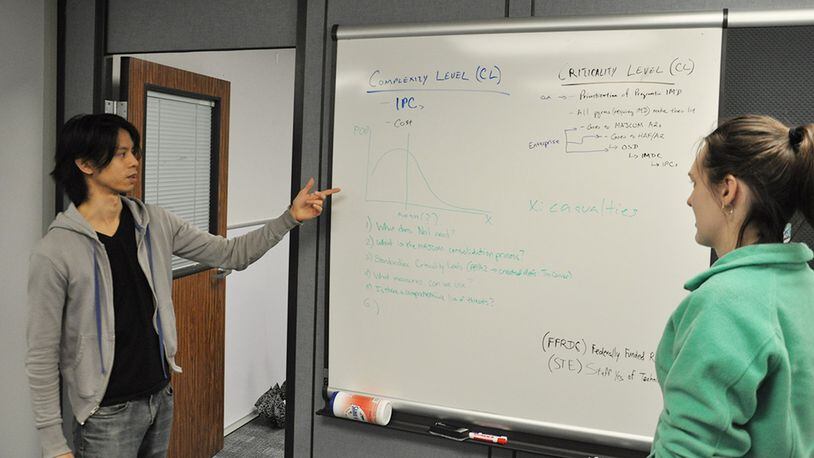He is a graduate of the Citadel with a bachelor’s degree in mathematics and has a master’s degree in operations research from Columbia University in New York City. The idea of solving real-world problems with math is appealing, Villongco said.
While many of his classmates at Columbia University took jobs on Wall Street and in the financial services industry, Villongco felt the strong urge to serve his country.
Last summer, he returned from a deployment in Southwest Asia where he provided regular assessments of the campaign to a combatant commander, in addition to using analysis to support other planning efforts including measuring the effectiveness of hellfire missile variants.
By examining various aspects of the missile including information from numerous battle assessment reports, Villongco and his team were able to prove that one Hellfire variant was more effective than the other. This conclusion helped provide commanders with options for their mission needs.
Another project he worked on while deployed was supporting a surgical team in forecasting their needs.
“Our task was to help the surgical team determine how many forward surgical sites they would need,” he said. “So we looked at casualty numbers and the scale and complexity of operations, and we modeled what kind of causalities we would see.”
The project was significant because the number and location of the surgical sites, along with the medical professionals staffing them could determine whether injured partner-nation troops lived or died.
The task was challenging due to the unpredictability of casualty rates.
“Casualties are random by the day,” Villongco said. “One day you could see one [causality] and another day you might see 20. I am trained to find the mathematical model that best fits the randomness, and fortunately I was able to give the surgical team a model to base their decisions on. I was able to run a simulation for them which showed what they could expect to see given their course of action.”
While at home station at Wright-Patterson, Villongco has been working with a senior analyst on improving decision making, by applying machine learning methods to support supply/maintenance planning.
“We live in a complex environment,” Villongco said. “Sometimes it’s not always clear what the problem is or we don’t have the luxury of having it clearly defined. The work folks like me do is important because it enables better decisions. And by better, I mean more scientific and data driven.”
While working at AFLCMC, Villongco is also enrolled as a Ph.D. student in Operations Research at the Air Force Institute of Technology.
About the Author
